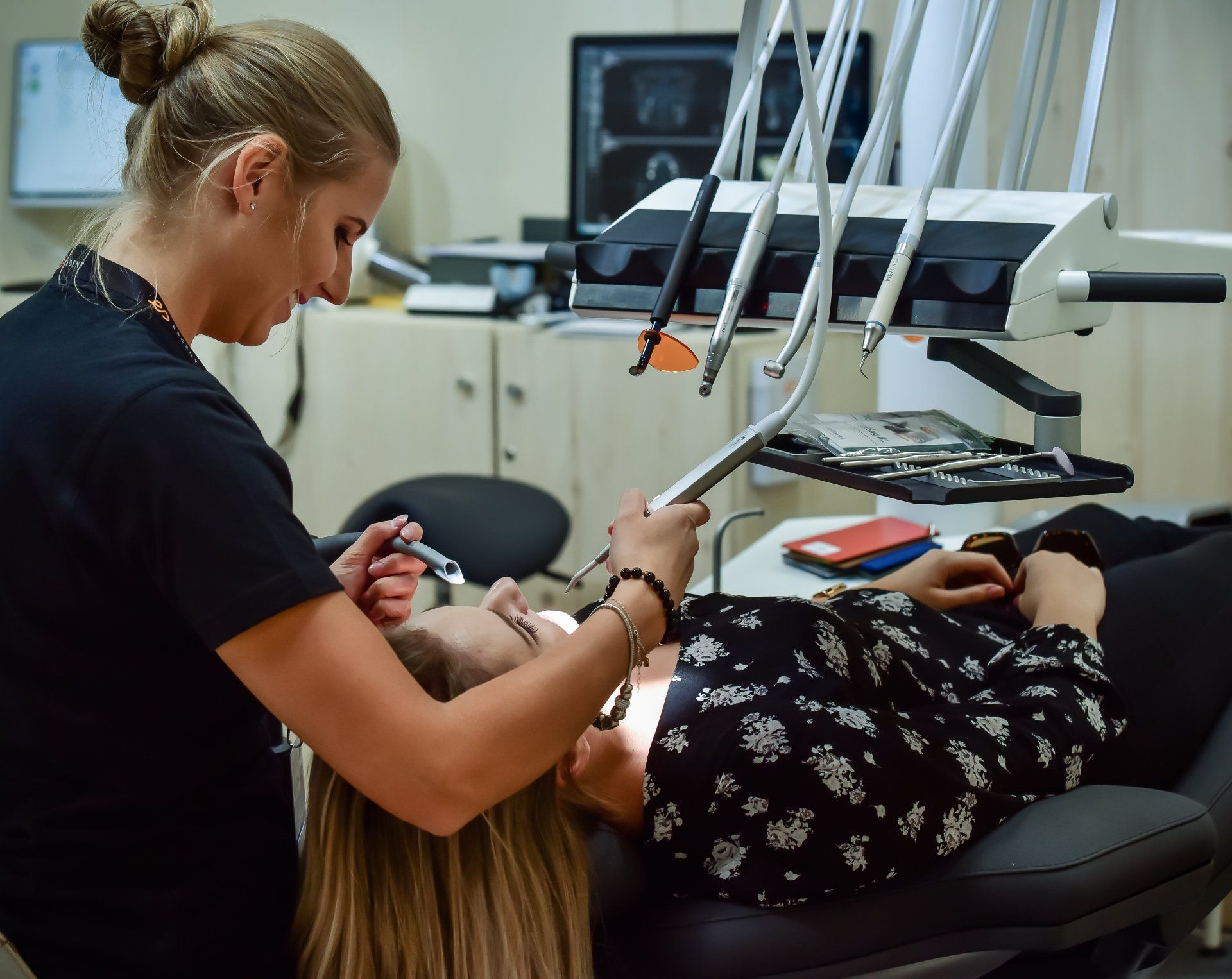How to Check for Oral Cancer

Oral Cancer Self Examination: What Should You Look for?
Just like with any other type of cancer, early detection of oral cancer increases your chance of beating it and maintaining a fairly normal life. The key to catching it early is performing regular self-examinations to see if you spot any changes in your body from the neck up, including your tongue, mouth, cheeks, neck, lips, and airways. Here are some ideas of what you should look for on each body part.
Tongue
Start by facing a mirror and sticking your tongue out as far you can so you can examine the top. Your tongue should basically be the same color and texture across the surface. Check the underside of your tongue by placing the tip against the roof of your mouth. You can also use your finger to feel for anything out of the ordinary. If you notice any lumps, bumps, swelling, or discoloration, you should make an appointment with your dentist for further investigation.
Mouth
Examine the inside of your mouth, especially the roof, much the same way. Lean back and look into a mirror to see if anything looks unusual. Use your finger and tongue to feel for lumps, bumps, and swelling. Your mouth should feel smooth and be generally the same color all over.
Cheeks
Most cancer in the cheek area is felt before you see it, so it’s important to use your fingers when performing an examination. With your thumb on the outside of your cheek and your forefinger on the inside, feel for any sort of lump or protrusion that shouldn’t be there. Visually examine your cheeks to look for light or dark-colored spots.
Lips
Checking your lips can be a little trickier, because food, speech, acne, and even the weather can affect their appearance. Use a hand mirror to examine them from all possible angles to check for dark patches or white spots, lumps and bumps, and dry patches. Pay extra close attention if you spend much time in the sun.
Neck
Many people assume oral cancer only affects the area of the mouth, but you can find warning signs in your neck, as well. Again, you want to look for any sort of lump, bump, or swelling. Examine your neck in a mirror to ensure both sides look the same. You can also run the tips of your fingers up and down it to feel for lumps. Apply slight pressure to feel for sore or tender spots, as well.
Airways
While it’s hard to physically examine your airway, you may notice some changes in your breathing or ability to swallow. You may develop an unusual cough that does not occur with any other symptoms and that cannot be attributed to a cold or allergies. Also, be aware of any type of unusual or persistent sore throat.
See a Dentist
If you notice any major changes while performing you regular oral cancer exam, do not panic. While lumps, bumps, swelling, and discoloration are often signs of cancer, they can also be signs of numerous other things, from dry skin to strep throat. Visiting a dentist when you notice something unusual can help you make that determination.
Other Oral Cancer Prevention Tips
Everyone is at risk for oral cancer, especially if they smoke, chew tobacco, have a family history of the disease, or spend a significant amount of time in the sun. The following tips can help you keep the disease at bay
- Quit smoking. Quit chewing tobacco.
- Limit your sun exposure and wear sunscreen when you are outdoors.
- Brush and floss your teeth at least twice a day.
- Eat foods with antioxidants that may help fight cancer, such as berries, beans, leafy greens, garlic, grapes, green tea, tomatoes, and cruciferous veggies like broccoli and cauliflower.
- See your dentist every six months.
The post How to Check for Oral Cancer appeared first on South Temple Dental.


